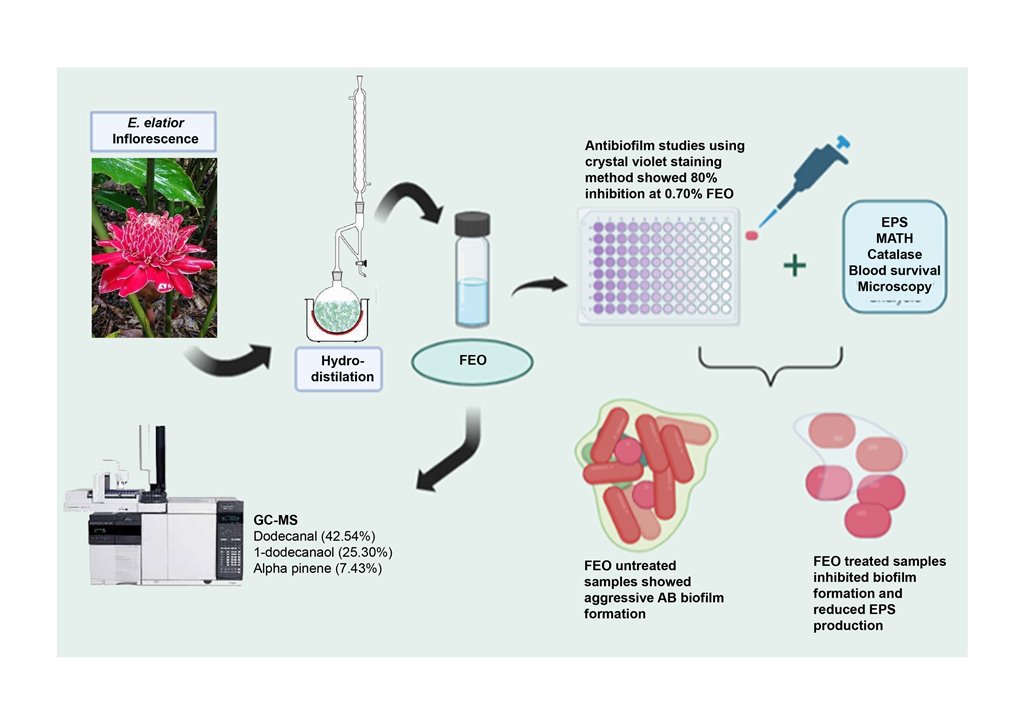The current study investigates the antibiofilm properties of essential oil extracted from the Flower of a Zingiber plant used in traditional medicines. EO from Etlingera elatior (Jack) R. M Smith tested against one of the critical nosocomial pathogens, Acinetobacter baumannii. The antibiofilm studies of Flower essential oil (FEO) by crystal violet staining method exhibited maximum inhibition of 80% at a concentration of 0.7% oil. The biochemical assays and microscopic analysis showed that the FEO significantly reduced extracellular polymeric substance production. Furthermore, FEO reduced the survival rate of A. baumannii in human blood. The chemical composition of extracted FEO was analyzed by Gas chromatography- Mass spectrometry. Dodecanal, 1-dodecanol, and alpha-pinene were identified as the major compounds. Concerning previous research, our study is the first investigation of the antibiofilm property of E. elatior flower oil. More detailed studies are required to identify the compound responsible for biofilm inhibition and its mode of action against A. baumannii biofilms.

